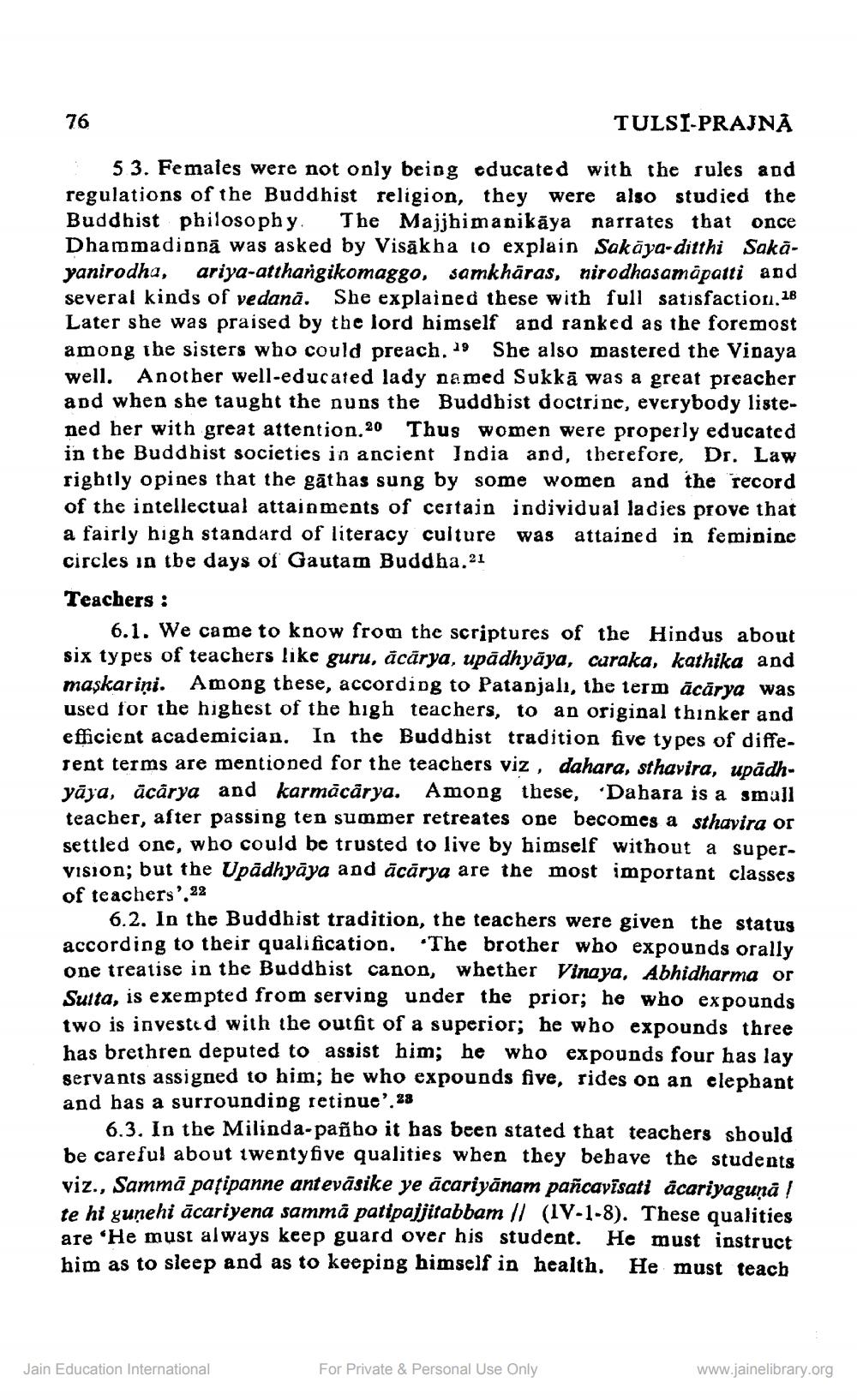________________
TULSI-PRAJNA
5 3. Females were not only being educated with the rules and regulations of the Buddhist religion, they were also studied the Buddhist philosophy. The Majjhimanikāya narrates that once Dhammadinna was asked by Visakha to explain Sakaya-ditthi Sakāyanirodha, ariya-atthańgikomaggo, samkhāras, nirodhasamāpatti and
several kinds of vedanā. She explained these with full satisfaction.18 Later she was praised by the lord himself and ranked as the foremost among the sisters who could preach. 19 She also mastered the Vinaya well, Another well-educated lady named Sukka was a great preacher and when she taught the nuns the Buddhist doctrine, everybody listened her with great attention.20 Thus women were properly educated in the Buddhist societies in ancient India and, therefore, Dr. Law rightly opines that the gathas sung by some women and the record of the intellectual attainments of certain individual ladies prove that a fairly high standard of literacy culture was attained in feminine circles in the days of Gautam Buddha.21
76
Teachers:
6.1. We came to know from the scriptures of the Hindus about six types of teachers like guru, ācārya, upadhyaya, caraka, kathika and maşkariņi. Among these, according to Patanjali, the term ācārya was used for the highest of the high teachers, to an original thinker and efficient academician. In the Buddhist tradition five types of different terms are mentioned for the teachers viz, dahara, sthavira, upadhyāya, ācārya and karmācārya. Among these, 'Dahara is a small teacher, after passing ten summer retreates one becomes a sthavira or settled one, who could be trusted to live by himself without a superVision; but the Upadhyāya and ācārya are the most important classes of teachers'.22
6.2. In the Buddhist tradition, the teachers were given the status according to their qualification. The brother who expounds orally one treatise in the Buddhist canon, whether Vinaya, Abhidharma or Sulta, is exempted from serving under the prior; he who expounds two is invested with the outfit of a superior; he who expounds three has brethren deputed to assist him; he who expounds four has lay servants assigned to him; he who expounds five, rides on an elephant and has a surrounding retinue'.28
6.3. In the Milinda-pañho it has been stated that teachers should be careful about twentyfive qualities when they behave the students viz., Sammā paṭipanne antevāsike ye ācariyānam pañcavīsati ācariyaguṇā! te hi gunehi ăcariyena sammā patipajjitabbam | (IV-1-8). These qualities are 'He must always keep guard over his student. He must instruct him as to sleep and as to keeping himself in health. He must teach
Jain Education International
For Private & Personal Use Only
www.jainelibrary.org




